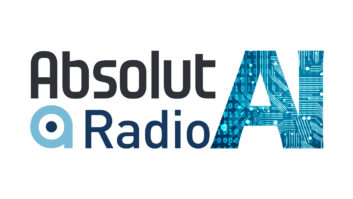Nowadays it seems that just about any aspect of radio station workflows and business operations can be outsourced or provided as a service.
The trend is visible in automation and intercom, processing and mixing, sales tools, back-office administration and tower lighting. Even hardware products may now come with available subscription upgrades to activate premium features.
What new functionalities and capabilities are these tools offering? What questions about backup, security and factory support should buyers be asking?
A Radio World ebook explores the implications of the op-ex model for technology and business executives in 2023. In this article we talk to a half-dozen experienced engineers and managers about the topic. In the ebook you can also find Q&As with sponsoring technology companies that are helping to lead this growing part of the radio industry.
Across the enterprise
“It’s probably easier to talk about aspects not sold as a service model,” said Derek Murphey, network production software manager for Northwestern Media.
“Our drinking water, postage, even printing is one service; and whether we need toner, paper or a completely new machine, we’re provided the ability to print documents. Softener salt is delivered on a schedule, and the tank is replaced when it stops functioning properly.
“We have to look a bit harder on the broadcast side, where we are not as trusting to hand over 100% of the control,” Murphey said.
At Northwestern Media, he said, “We are very fortunate to have a robust IT department in-house, so we don’t need to farm out those services, something very common for small one-off stations. While we deploy and maintain our own hardware, our billing, our traffic and music scheduling software are all ‘leased’ services.”
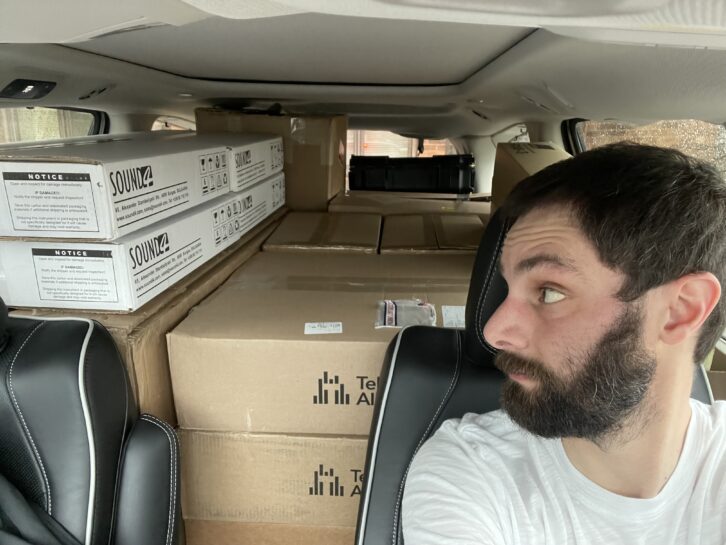
Radio sales teams already have a number of tools that are provided as a service.
“From my user perspective as a salesperson,” said Rob Evans, account executive for Bonneville Seattle, “service models provide resource savings — time, labor, communication, etc., for instance with Office, Teams or vCreative — or revenue generation support, like Tapscan, Veritone or ZoomInfo. The company selling the SAAS needs to demonstrate positive ROI and solve pain-point problems to be purchased.”
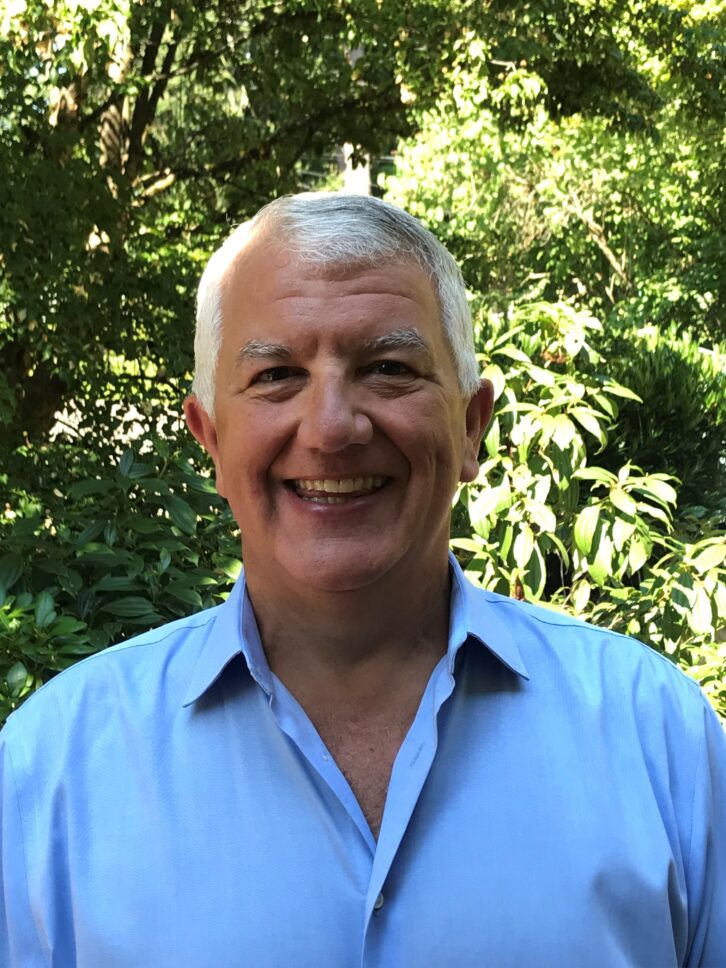
But the horizon for service-based offerings is broadening quickly.
Joe Geerling, director of engineering and technology at Covenant Network, says, “My current work uses Barix boxes and the StreamGuys Reflector service as the ‘satellite of IP.’ I send audio to 26 transmitter sites through the Reflector service.”
Covenant also uses a service to manage fundraising, and it relies on Constant Contact for email management and MS Office 365 and OneDrive for various functions.
“We are an Axia facility and watching for ways to justify taking the studio structure to the cloud; but with such a simple facility and all the connections to talent in place it will be a while,” he continued.
“I would consider trying a service to send my audio to and have it monitored, processed and sent to sites ready for composite or whatever input the individual site requires. We own our automation systems and they are pretty simple to run — even when a vendor stops upgrading the software!”
Tony Lorino is CEO of Throwback Brands, which produces three nationally syndicated shows and provides format, digital and consulting services for broadcasters. It offers a 24/7 option “as a service” that includes programming, on-air hosts, imaging, promotions and other services.
“From my perspective, many independent owner-operators are in a tough spot, where they want all of their brands to thrive but they don’t have the option to staff all of them to the capacity where they’d like, or even staff their engineering or digital department.
“In addition, it is increasingly hard to find qualified people who want to relocate for broadcast jobs. That’s where these services thrive.”
Throwback has been working with radio.cloud to build out its 24/7 format on WYET(FM) “Throwback 102.3” in South Bend, Ind. Radio.cloud, Lorino said, “runs the entire side of the radio station’s programming, including local news and weather that are inserted locally. Local and national spots can integrate easily too.”
Jason Ornellas, regional director of technology for Bonneville International Corp., notes that service models are not limited to software.
At KTAR(AM) in Phoenix, Bonneville is using LumenServe for tower lighting as a service. “This model seemed like a great way to spread maintenance and capital costs over time as well as take the burden and responsibility off the chief engineer. It’s a super-convenient solution that came about when we were looking to replace the current tower lighting.”
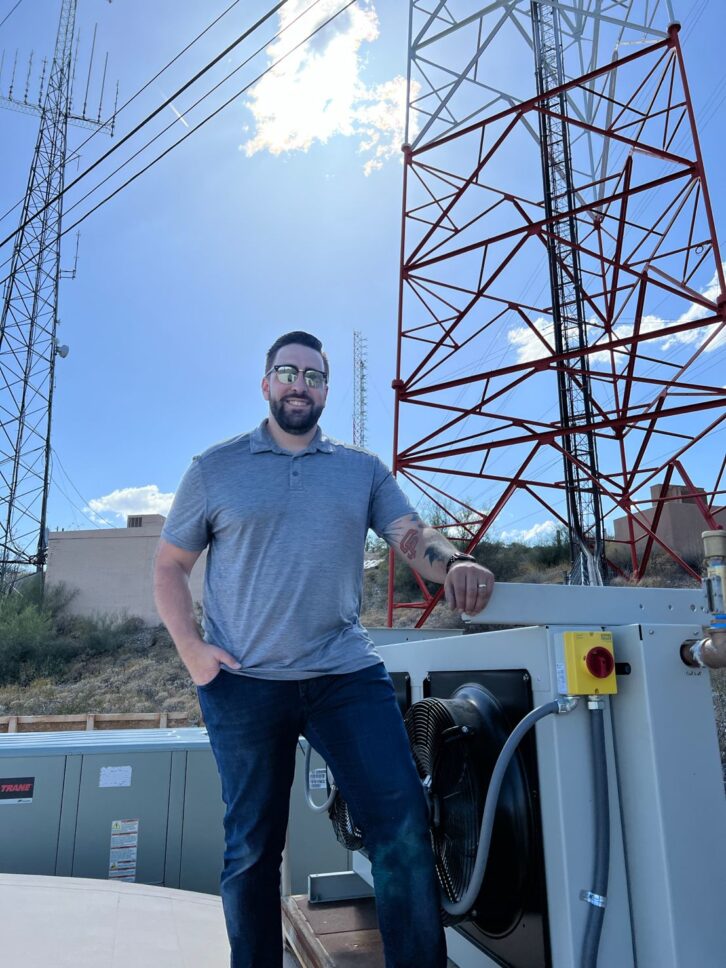
LumenServe offered a turnkey system that included a new LED lighting system, compliance, 24/7 monitoring and all maintenance and repairs. “The monitoring can be fully customized to your scale, and they provide quarterly reports for your compliance records. It’s one less thing our chief has to worry about. The service model means we will never need to purchase a new lighting system ever again — a win all around.”
Rob Bertrand is senior director of technology at WAMU in Washington and former New York market chief for CBS Radio and CBS Sports Radio Network.
“I’ve been thinking a lot about this lately, both in terms of what we might benefit from doing at WAMU and, more broadly, where this has implications for ensuring the sustainability for public radio nationally,” he said.
“There is a lot of good work going on in the commercial sector, primarily driven by mandates for cost reduction, that could be adapted in the public media space and with a mission-centric focus to reallocate operating expenses and enable greater audience service.”
WAMU uses cloud-based WideOrbit Traffic and WideOrbit Payments, as well as on-premises WideOrbit Automation for Radio.
“Our adoption of WideOrbit Payments is a great example of how we leveraged an existing hosted platform delivered as a service to reduce our dependence on multiple back-office personnel to receive and process payments and ensure they were quickly deposited and correctly credited,” Bertrand said.
“As staff turned over, it presented us with both a challenge and an opportunity. Ultimately we adopted WO Payments, which integrates with WO Traffic for billing and reconciliation, and it eliminated the need for lots of manual local work that did not deliver value to our operation.
“While big commercial operators have been doing this sort of thing for a long time, this was an example of where, as a standalone station, we were able to adopt best practices and streamline workflows that would not have been possible if it were not for this SaaS-based solution.”
Bertrand points out that in public media, Jim Taszarek Jr. founded Market Enginuity as a corporate sponsorship team using a service model.
“He was able to take his passion for public media and its audiences, pair that with his knowledge of commercial best practices, and begin to serve the need of public stations who often lacked the sort of expertise and training that can be rolled out across a large corporate player, for example. Today they’re in lots of markets, fueling the missions of lots of public stations.”
Bertrand is aware of LumenServe tower lighting and considers it an innovative approach. “And I’m so impressed with what Josh Bohn and his crew are doing at MaxxKonnect. It was so interesting to see how he’s been evolving his product of ‘bonded wireless internet as a service’ to other part of the air chain.”
Another area where cost reductions can be realized is in the management of ongoing expenses for telecom, internet and point-to-point connectivity.
“Emily Lindner saw this when she worked for AT&T, and she went on to found TruNorth consulting,” Bertrand said. “I used her in New York at CBS and brought her in here in D.C. Our operation at WAMU is much smaller than what I was managing in New York, yet she and her team still found ways to deliver six-digit annual savings to us.
“Coupling that kind of work with new expenditures for SaaS solutions is an interesting approach to finding a way to pay for new ongoing expenses without having to find new budget for it. My only regret is that we did that work long enough ago that those budget savings have long since been built into our budget.”
Pros and cons
What are the benefits and business implications of choosing to purchase a service in this way?
“It really is just moving a line item to another line of the budget, depreciation vs. ongoing costs,” said Jason Ornellas.
“It can allow for more flexibility to use funds while allowing the company to gain additional resources or tools.”
Depending on your organizational structure, Derek Murphey said, it could be an easy shift from cap-ex to op-ex — or it could be a never-ceasing battle to defend your budget line.
“Capital expenses are generally a one-off proposal [involving] proof of ROI; that initial approval can be long and drawn out, but once you own it, you own it for good. Adding operational budget lines can be straightforward as long as the bottom line balances. The unique challenge for op-ex services comes when they are subject to budget review questions: ‘Is this the best service?’ or my favorite, ‘Can you do it for less?’”
Broadcasters, he said, can realize a number of benefits with the service route, given the right provider.
“When it comes to software as a service, even software leases, the trend is regular feature enhancements and service patches. As more and more of the SaS offerings are hosted in cloud data centers, there is some overhead reduction for on-premises computing hardware and consequently reduced utility and cooling demand.”
Joe Geerling recalls a time when companies were evaluated on how much they reinvested in capital.
“But the more your business depends on software, the less the cap-ex should matter. Radio by its nature will have transmission systems for the long term; but creation and product delivery to the sites can all be software and outsourced hardware. GMs were always looking for ways to use cap-ex to reduce op-ex, and now that has to change.”
If he were pitching an owner or manager on service models for broadcast infrastructure, Geerling would remind them of the benefits radio has discovered with phone systems, Constant Contact, Office 365 or Google’s offerings.
“All remove any burden of local servers, software expertise to install, maintain and update. Even more critical is redundancy, backups, clean power and disaster recovery. Typically remote access is also part of cloud services.”
Applying this to broadcast can translate to smaller rack rooms, smaller UPS units, smaller critical cooling systems, fewer square feet and less dependence on employees to perform updates and security patches, Geerling said.
“If done well, the disaster recovery plan can be more reliable than is possible with a local facility and staff. But it can be done poorly, resulting in single-point failures. Many of us live in a world of many single-point failures already,” he said.
The cloud brings important benefits to many service offerings, Rob Bertrand said.
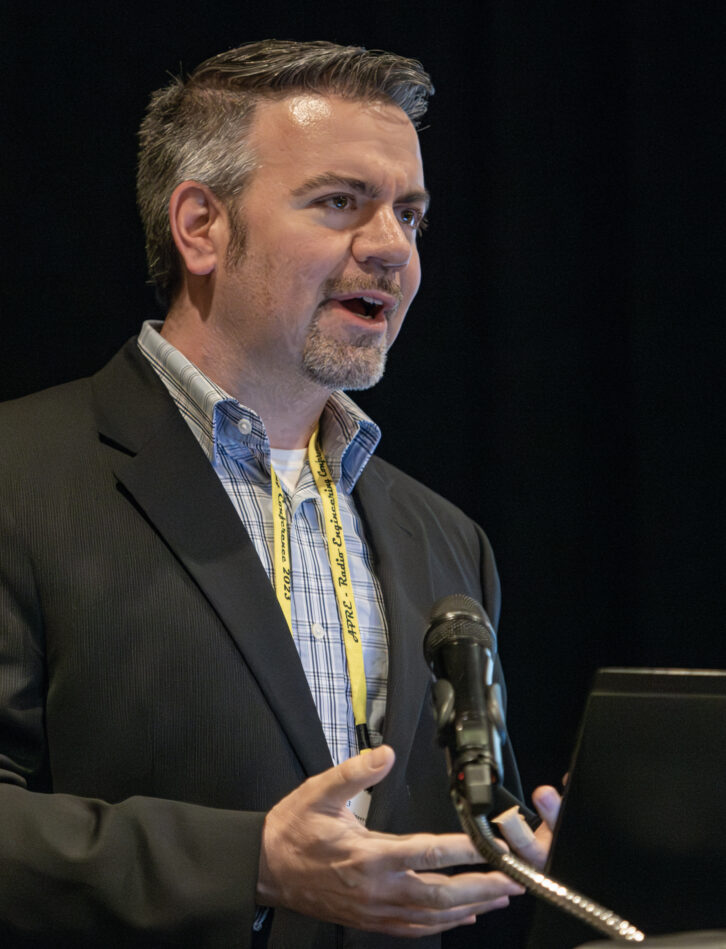
“A huge advantage is not needing to provide the personnel or infrastructure to reliably maintain the system. It’s hosted in a data center, ostensibly backed by solid HVAC, UPS and generator power. If you are not in the position to run that level of technical operation locally, cloud solutions are a great option.”
You will still need to address other operational contingencies in order to ensure that your station stays on the air, he continued, but it’s becoming more and more realistic to operate a simpler local technical facility and leave the “heavy lifting” to outsourced data centers.
“This is not so simple as just picking a few cloud services and ignoring the need for careful technical planning; but one can envision a future where skilled regional consultants are able to help stations build scaled-down local operations that leverage cloud capabilities for day-to-day operation as well as resilience in the event of utility disruption or natural disaster.
“The larger commercial operators are already doing this across their companies, to varying degrees. Cloud-based services are opening up a number of possibilities for smaller independent stations.”
[Sign Up for Radio World’s SmartBrief Newsletter]
Bertrand says systems such as traffic are easy places to start. “I’ve even been able to successfully argue for the implementation of workflow systems like PromoSuite to assist with underwriting production and approval because of the number of hours it would free up for everyone involved with the process, ultimately increasing our overall productivity.”
Where things get more complicated, he said, is looking at tools for which the business is not accustomed to making a recurring payment, such as automation and consoles. “I do think there is a model there,” he said, adding that several of his vendors are spinning up SaaS offerings.
“For stations that are struggling to operate because they can’t maintain technical personnel and perhaps have costs that are spiraling out of control due to that challenge, diverting those expenditures to a structured solution isn’t hard,” Bertrand said.
“If you’re a standalone station without engineers, and you’re somehow making it work with a very part-time contractor — or even just some reasonably knowledgeable operations staff — I think it’s a harder sell to upgrade to a superior product that is now going to require a new expenditure to cover.”
And for stations with robust technical staffs, especially those with unique production needs, Bertrand said it’s much harder to argue to move to a SaaS model for playout or console systems.
“Is that expense in addition to your technical staff? Instead of your staff? There are so few engineers left in this industry. I sure hope that the independent stations that are still employing engineers are not going to see this as a cost-reduction opportunity.”
In a large corporate environment, with the ability to build complex internal support systems, he said it is indeed possible to make such reductions, subject to some debate about efficacy and humanity.
“However, for standalone stations, someone still needs to manage the integrations of these SaaS solutions and weave them throughout a station’s operation. There just isn’t the scale to do what the large commercial operators are achieving in terms of centralized operations.”
Nevertheless, Bertrand said, there is much to be explored. “I do think there is opportunity for everyone — for engineers, manufacturers, stations and audiences. But we need to start working together and thinking differently.”
Pushback
Not everyone will be on board.
“Many engineers are not comfortable giving control of so many aspects of the facility over to a bunch of electrons whose path is completely out of the control of anything in the local area,” Geerling said.
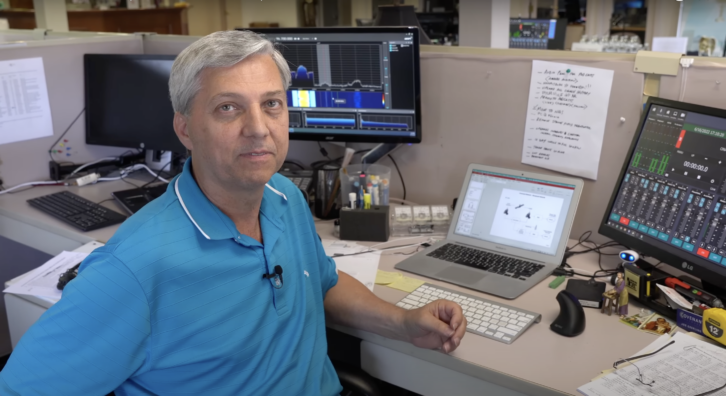
“Companies supplying the services are often unaware of what we would call critical paths or critical equipment needed to provide the services. They leave that to the providers in the middle.
“What happens when there is a DNS failure or a router is mis-programmed? Losing control of critical paths of the product is the biggest downside to many engineers. The downside for many managers is realizing capex is converted to operating expense, a definite downside dependent on how their company adjusts bonus calculations!”
Murphey notes that when a service or subscription ends, there may be little you can do to keep it running.
“The flipside to that fancy software agreement is the day the vendor announces end of life and you’re faced with the decision of how to replace the function, unlike a traditional software buyout where you can sandbox that Win95 tower running a Pentium233 and 64 MB RAM, well, because it just works.
“Another consideration as these services migrate to the cloud is maintaining access,” Murphey said. “If the service provides direct URL access, that allows remote workers to connect with little to no planning. To serve a more traditional office with many employees requires some advanced network planning to ensure the bandwidth and redundancy are sufficient.”
Murphey noted that budget managers may hold differing views about the op-ex and cap-ex approaches. “I’ve had success bringing both to the table, especially when you can speak ROI. It’s like walking into Willy Wonka’s Chocolate Factory for them. In all seriousness, yes it requires new conversations and new ways of thinking, but it’s not terribly hard to break up a $250,000 capital purchase to a $2,000 per month budget item.”
[Check Out More of Radio World’s Tech Tips]
Bertrand related that WAMU recently evaluated several providers of newsroom software.
“Two vendors offered buyout licensing with ongoing support costs, and two offered it as SaaS. While we ultimately made the selection based on feature set and the match of the vendor’s scale to our own, it was difficult to do the math and look at a very high ongoing cost into the future for the SaaS solutions, particularly given the uncertain nature of whether current revenue declines in public media will continue or will rebound.”
He said that until COVID, public radio generally avoided the declines seen in commercial media.
“However, since 2020, it seems safe to say that all of radio seems to be in the same boat. We’re thinking very carefully about one-time versus ongoing expenses. And it’s a tough sell, no matter how strong the product, to say that choosing a solution with a higher recurring cost of operation is going to mesh with our business needs in the future.”
He said it’s easier to make the commitment to larger one-time spends set against a known economic backdrop than to make a decision that you’ll need to live with in future years, not knowing what conditions will entail.
Custom attributes
And then there is the trend of more hardware devices integrating software upgrades or options that can be activated for an extra charge or subscription.
“Many manufacturers will give more resources or custom attributes at a cost, which makes sense,” said Jason Ornellas.
“Enhanced features like additional multicasting, PPM encoding, or additional processing and logging come either at an additional subscription fee or a one-time fee with an annual cost. Automation brands do this as well, which we are used to with modules or licensing subscriptions. This is also the model that vendors have begun using for cloud-based applications, so the transition to this model shouldn’t be newsworthy.”
But some users find it annoying to have to pay extra for such activations.
“I feel the pain in that comment,” said Joe Geerling. “It was common to have a broadcast company invest in a 950 STL as well as consider locations for studios to get a reasonable sightline to the tower — incredible reliability, one-time funding and many years of service. No monthly fees. IP audio networks allow one-time investments and years of reliability, as well as a weekend studio move!
“But the one issue that keeps slapping us all is software and its ongoing need for patching and development,” he continued.
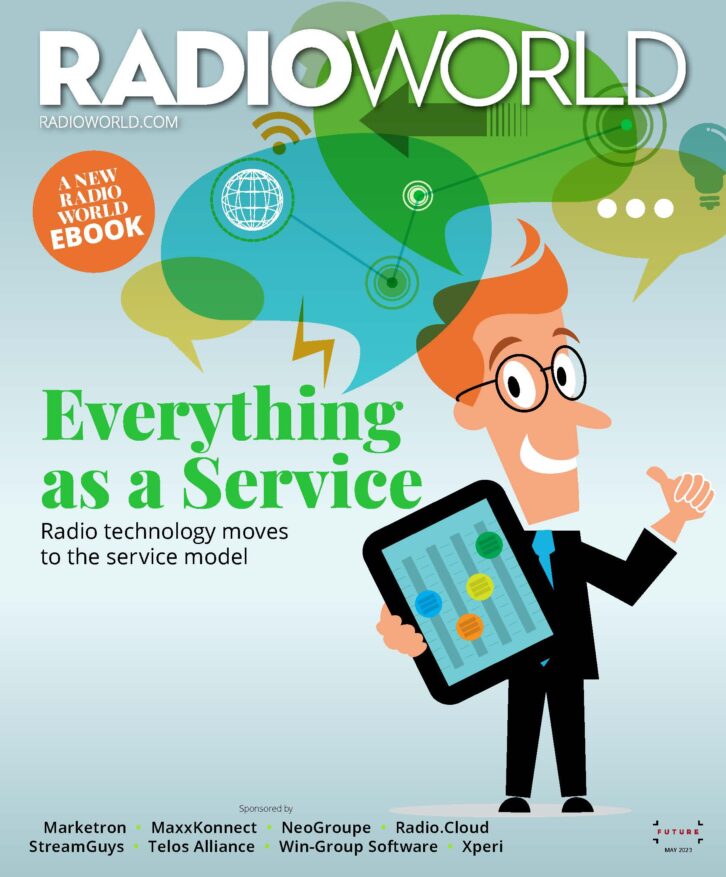
“Once you find a strategic need for a software-driven system, you’re likely locked in for some monthly fees. For some, this is an easy transition, and it would be for me also — except that I tasted 20 or so years when there were no ongoing fees for most critical hardware.”
Protect yourself and think ahead
In shopping for functions sold as a service, how can technology buyers protect themselves from a product suddenly being discontinued, software not updating or a company disappearing?
Tony Lorino of Throwback Brands says users can be put in a real bind if software isn’t updated reliably.
“As a syndication provider, I’m seeing this more and more. As we try to service our programming to affiliates, they have dated systems that they never chose to update, or that a software provider sold to another company and then sold to another company and so on. Using cloud-based software keeps you updated, nimble and at top speed at all times.”
Derek Murphey paraphrased Benjamin Franklin. “In software terms, one might say that nothing in life is certain except bugs and change. Having clearly defined terms and a long track record of customer support are critical when looking at services.”
There really is no assurance a vendor will provide adequate notice for a product’s end of life, he said. “Just this year I’ve had two applications I used for random tasks shut down with little notice. One gave notice Monday morning with the page removed by end of the day Friday! Rarely is it good news when the email subject line starts, ‘Thank you to our loyal customers.’”
Joe Geerling echoed the importance of a vendor’s track record and of strong relationships.
“The biggest question anyone should be asking is if they believe that this company, or at least the product, will be around and function through any turbulent times,” he said.
“Know your critical software vendors and how you would work around the loss of any of them. Businesses as small as many of the broadcast software vendors can go away in a hurry, perhaps without finding a buyer or company interested in servicing existing customers. Add that to the reality that you may not know if the team writing the code is actually two people in some foreign country that suddenly stops development.”
To sleep soundly, he said, also create a plan for what to do if any given product fails.
“Do you want a backup plan from the same company? Or a completely separate company? You may want to be able to spin up the services on your own cloud-based servers, or even on servers in your facility, should future situations warrant. And should you keep your old gear in place just in case?”
He emphasized the importance of passwords. “Most tech ops will want access from everywhere. Even in large companies, engineers and IT techs will figure out ways to access remotely from non-company devices. Security practices are crucial. Make sure the service delivering to all critical locations is secured — buried is best, entering the building in conduit. My personal choice would be one fiber-fed connection in conduit and one cellular feed as backup.”
Geerling said a service-level agreement should include guaranteed service response times, latency, minimum continuous data speeds up and down, and notification procedures.
“I have never done [an SLA] for the software side, but I would add metrics for performance like a responsiveness measurement; and make sure all locations are covered, possibly worldwide. You also have to address redundancies in delivery so the failure of a data center doesn’t take you out. Data backups and data security must also be addressed — as well as how I get my data if I leave, and under what conditions the agreement can be ended.”
Make sure you have flexibility to opt out should a service become no longer competitive, “for instance in a data delivery contract with a cable company before fiber became available at a facility.”
In general, Geerling encourages engineers and managers to think ahead.
“Look for opportunities as equipment ages out to replace it with a service, and evaluate if it makes sense. Does it enhance the station’s product, does it reduce a cost without reducing the quality of the product? Look at getting the facility in order for these changes — reducing square footage, rethinking the network area or phone closet so that new fiber is protected and easily identified,” he said.
“Keep up with trends that are a few years out and make changes with these in mind. Be doing anything you can now so when the opportunity to convert even one system comes along, you are ready and the change has little stress.”









